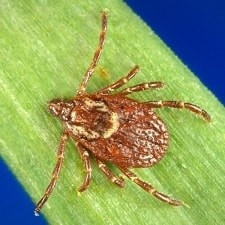Laurie Anne Walden, DVM What would you do with your pets if you had to evacuate? Hurricanes, tornadoes, and winter storms can affect any part of North Carolina. Fires and other unexpected events can also displace families with little or no warning. Plan ahead so you can take your pets with you. Don't leave them behind except as a last resort (and never leave them chained outdoors). Bring pets indoors at the first warning of a storm. You might need to be able to find them quickly. Pet identification
Pet-friendly housing Emergency shelters might not be able to accept animals. Locate places you can go with your pets in advance. Consider alternatives to public shelters:
Pet transport Have a leash, harness, or carrier handy for every pet in your household. Be sure you have as many cat carriers as cats. Secure and comfortable crates (large enough to stand up and turn around in) are useful for transporting dogs and might be required at co-located shelters. Emergency kit Prepare an emergency kit and consider keeping a larger set of supplies at home in case you have to shelter in place (for example, during an ice storm). The Federal Emergency Management Agency (FEMA) recommends including these items in a pet emergency kit:
Backup caregivers Discuss your evacuation and pet care plans with friends, neighbors, or relatives. Try to arrange to have someone care for your pets or evacuate them if you can't. A study of an evacuation after a chemical spill in Wisconsin showed that 60% of dogs and cats were not evacuated. Cats were only half as likely as dogs to be evacuated. Failure to evacuate cats was associated with not having cat carriers. Planning for evacuation in advance will help you avoid this kind of logistical problem. For more information The recommendations in this article are from FEMA (also see this brochure [PDF]), the Humane Society of the United States, the American Society for the Prevention of Cruelty to Animals, NC State University, the NC Department of Public Safety, and the NC Department of Agriculture [PDF]. August 31, 2017 Photo by Iler Stoe Laurie Anne Walden, DVM Dental disease is very common in dogs and cats. Luckily, home dental care can help prevent painful tooth and gum conditions. Dogs and cats rarely get cavities. However, just like people, they develop gingivitis (inflammation of the gums) and periodontal disease (inflammation and infection of the structures that hold the teeth in place). According to the American Veterinary Dental College, periodontal disease is the most common disease diagnosed in adult dogs and cats. It causes bad breath, mouth pain, and tooth loss. It's also associated with heart, kidney, and liver problems. Because periodontal disease occurs under the gumline, you might not know your pet has the condition until it's advanced. Pets with unstained teeth and little tartar buildup can still have periodontal disease. The best way to prevent periodontal disease is to remove plaque daily at home and have the teeth professionally cleaned from time to time, just as you do with your own teeth. Professional dental cleanings for pets are performed under general anesthesia to allow removal of plaque and bacteria under the gums. (Simply scraping tartar off the visible tooth surfaces doesn't prevent gum disease.) Home dental care products If your pet has mouth pain or is bleeding from the gums, consult a veterinarian before beginning a home dental care program. Plaque removal can be painful for animals with existing oral disease unless it's done under anesthesia. When you're choosing oral hygiene products, look for the Veterinary Oral Health Council (VOHC) seal on the product packaging. The VOHC seal means that the product meets standards for effectiveness against plaque, tartar, or both. You can find lists of accepted products on the VOHC website. Tooth brushing is the standard way to remove plaque at home. Brushing daily or every other day has been shown to be significantly more effective than brushing once a week.[1] Use toothpaste formulated for pets, not for humans; it's safer for them to swallow. Here are two videos explaining the procedure in detail:
Medicated dental wipes are an alternative to toothbrushes. In addition to providing mechanical plaque removal, these products contain agents that slow plaque buildup. Oral dental gels contain antibacterial ingredients that improve breath odor and decrease plaque formation. If your reaction at this point is "I'm liable to lose a finger if I try to stick something in my pet's mouth," there are other options. Indirect dental care products can be reasonable alternatives, especially for animals that might bite. Dental diets are designed to abrade tooth surfaces during chewing. They work only on teeth in contact with the food. Dental chews and treats also mechanically remove plaque or tartar from teeth that they contact. Some chews are made of rawhide; others are soluble. Be aware that any of these products can pose a choking risk. Rigid products (like bones or hard nylon) may fracture teeth. Dr. Jan Bellows, a veterinary dental specialist, recommends these precautions[1]:
Water additives accepted by the VOHC inhibit the growth of bacteria in the mouth and reduce plaque and tartar buildup. Your pet doesn't have to have bad breath! Call the clinic if you have any questions about your pet's oral health. References 1. Harvey C, Serfilippi L, Barnvos D. Effect of frequency of brushing teeth on plaque and calculus accumulation, and gingivitis in dogs. J Vet Dent. 2015;32(1):16-21. doi:10.1177/089875641503200102 2. Bellows J. The ultimate guide to veterinary dental home care. DVM360. May 4, 2017. Accessed February 5, 2021. https://www.dvm360.com/view/ultimate-guide-veterinary-dental-home-care Photo by Ryan McGuire Laurie Anne Walden, DVM You probably know that ticks carry Lyme disease. But did you know that ticks also transmit other diseases that can make your pet seriously ill? People and pets get the same tick-transmitted diseases. These diseases are not directly contagious between humans and animals (you won't catch Lyme disease from an infected dog), but we are all exposed to the same ticks outdoors. And one recent study showed that people with pets were more likely than those without pets to find ticks on themselves. Rocky Mountain spotted fever According to the CDC, North Carolina has one of the highest rates of Rocky Mountain spotted fever (in humans) in the country. The disease is caused by a type of bacteria called rickettsia. It is usually transmitted from a tick to its host within a few hours of tick attachment. Symptoms of Rocky Mountain spotted fever in dogs generally begin a few days to two weeks after transmission. Some of the signs in dogs are fever, loss of appetite, joint pain (lameness or stiff gait), vomiting, and bruising of the skin or gums. It is potentially fatal but can be treated with antibiotics. Ehrlichiosis Like Rocky Mountain spotted fever, ehrlichiosis is a rickettsial infection. The Companion Animal Parasite Council reports that in 2016, over 16,000 dogs in North Carolina had positive antibody tests for ehrlichiosis--that is, they had been exposed to the bacteria at some point in their lives. The symptoms of ehrlichiosis in dogs and cats depend partly on the rickettsia species and are similar to those of Rocky Mountain spotted fever. Dogs can also be infected without showing any symptoms. This disease is also treated with antibiotics. Lyme disease Lyme disease, also called borreliosis, is caused by Borrelia burgdorferi bacteria. It is not as common in North Carolina as Rocky Mountain spotted fever and ehrlichiosis, although dogs do test positive here. (These tests do not show where the exposure occurred; some dogs may been exposed elsewhere and then traveled here.) The Companion Animal Parasite Council warns that the disease is spreading and that North Carolina and other states bordering typical Lyme disease areas may start to see more cases. Borrelia are transferred from tick to host a day or more after tick attachment. Symptoms of Lyme disease vary, although fever and lameness that shifts from one leg to another are typical. The symptoms can be similar to those of other tick-borne diseases. Some dogs have no signs of infection. This disease can affect the kidneys, heart, and nervous system and may be fatal. Like the other bacterial tick-borne diseases, Lyme disease is treated with antibiotics. A vaccine is also available. Tick paralysis Some ticks produce a toxin that causes paralysis. The symptoms range from weakness (usually beginning in the rear legs) to a complete inability to move. In severe cases the patient can die from paralysis of the muscles that control breathing. Removing all ticks may be enough to cure the disease. However, some dogs require intensive treatment in the hospital. And others Ticks carry many other known diseases, such as anaplasmosis, babesiosis, and tularemia, and probably some that have yet to be identified. Because tick-borne diseases infect animals as well as people, dogs can act as sentinels for these types of diseases in humans. For instance, a CDC report published in 2011 showed that the incidence of Lyme disease in dogs could predict the risk of Lyme disease for humans in the same geographic area. To learn more Parasite prevalence maps (Pets & Parasites) Tick removal (Centers for Disease Control and Prevention) Ticks (Companion Animal Parasite Council) -- guidelines for controlling ticks on pets August 3, 2017 Image credit: CDC/James Gathany |
AuthorLaurie Anne Walden, DVM Categories
All
Archives
June 2024
The contents of this blog are for information only and should not substitute for advice from a veterinarian who has examined the animal. All blog content is copyrighted by Mallard Creek Animal Hospital and may not be copied, reproduced, transmitted, or distributed without permission.
|
- Home
- About
- Our Services
- Our Team
-
Client Education Center
- AKC: Spaying and Neutering your Puppy
- Animal Poison Control
- ASPCA Poisonous Plants
- AVMA: Spaying and Neutering your pet
- Biting Puppies
- Boarding Your Dog
- Caring for the Senior Cat
- Cats and Claws
- FDA warning - Bone treats
- Force Free Alliance of Charlotte Trainers
- Getting your Cat to the Vet - AAFP
- Holiday Hazards
- How To Feed Cats for Good Health
- How to Get the Most Out of your Annual Exam
- Indoor Cat Initiative - OSU
- Introducing Your Dog to Your Baby
- Moving Your Cat to a New Home
- Muzzle Training
- Osteoarthritis Checklist for Cats
- What To Do When You Find a Stray
- Our Online Store
- Dr. Walden's Blog
- Client Center
- Contact
- Cat Enrichment Month 2024
|
Office Hours
Monday through Friday 7:30 am to 6:00 pm
|
Mallard Creek Animal Hospital
2110 Ben Craig Dr. Suite 100
|
Site powered by Weebly. Managed by IDEXX Laboratories

 RSS Feed
RSS Feed